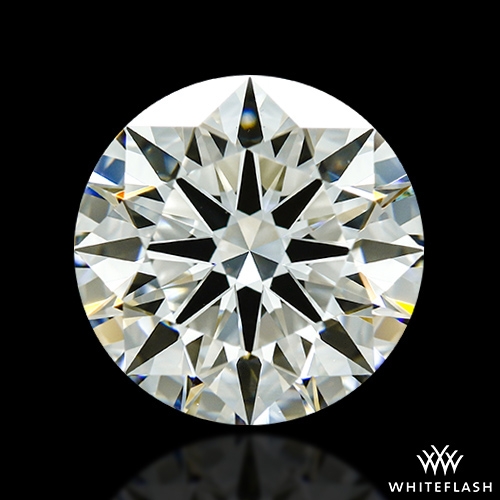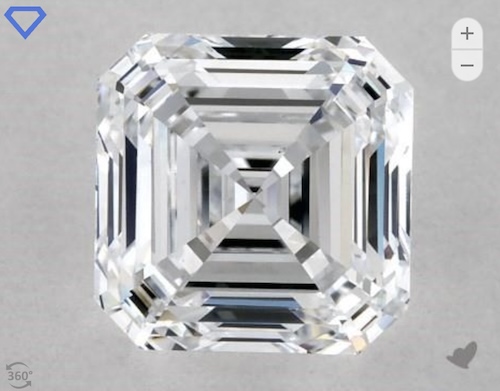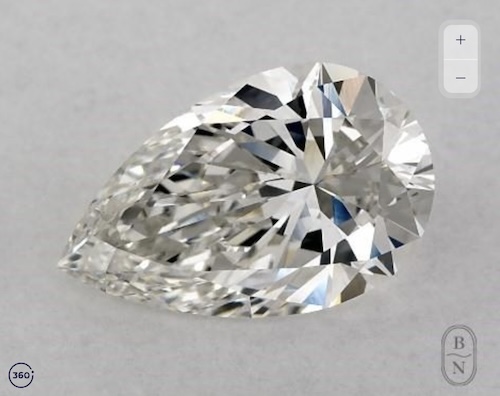Diamond Education
Lab Grown Diamonds
In an ever-evolving world where innovation meets tradition, one of the most significant shifts has been seen in the jewelry industry, especially in the realm of diamonds. While naturally mined diamonds have long held the crown, a contender has stepped up to challenge the status quo - lab-grown diamonds. These gems, crafted meticulously within the confines of a laboratory, mimic the properties of their natural counterparts so closely that only expert gemologists can tell them apart.
This comprehensive guide seeks to demystify the world of lab-grown diamonds, arming you with the knowledge you need to make an informed decision. We will delve into the fascinating science behind these gems, debunk common misconceptions, and provide practical advice on how to choose and care for your lab-grown diamonds. Whether you're a first-time buyer or a seasoned jewelry enthusiast looking to explore new avenues, this guide is designed to navigate you through your journey into the world of lab-grown diamonds.
Summary
- Understanding Lab-Grown Diamonds
- The Advantages of Lab-Grown Diamonds
- Quality and Characteristics of Lab-Grown Diamonds
- Myths and Misconceptions about Lab-Grown Diamonds
- How and Where to Buy Lab-Grown Diamonds
Understanding Lab-Grown Diamonds
Understanding lab-grown diamonds is the first step to making an informed purchase. Here's a breakdown of what these intriguing stones are and the high-tech process behind their creation:
What are Lab-Grown Diamonds?
Lab-grown diamonds are real diamonds with the same chemical composition, physical properties, and optical brilliance as natural diamonds.
They are not diamond imitations or simulants like cubic zirconia or moissanite. Instead, they consist of carbon atoms arranged in the same crystal structure as natural diamonds.
This means they possess the same hardness, refractive index, and sparkle associated with naturally mined diamonds.
How are Lab-Grown Diamonds Created?
Two primary methods are used in the creation of lab-grown diamonds: High Pressure-High Temperature (HPHT) and Chemical Vapor Deposition (CVD).
HPHT replicates the natural diamond formation process by applying immense heat and pressure to a carbon source until it crystallizes into a diamond.
The CVD process involves placing a diamond seed in a chamber filled with carbon-rich gases. Microwaves are used to break down these gases, allowing the carbon atoms to adhere to the diamond seed and create a diamond crystal.
Comparing Lab-Grown and Natural Diamonds
The main difference between lab-grown diamonds and natural diamonds is their origin. Natural diamonds form over billions of years in the Earth’s mantle, while lab-grown diamonds are created in a matter of weeks in a controlled laboratory environment.
In terms of visual appeal and durability, lab-grown diamonds are virtually indistinguishable from natural diamonds without the use of sophisticated gemological equipment.
With this fundamental understanding of lab-grown diamonds, you can confidently explore the unique advantages that these man-made marvels have to offer, and why they are becoming an increasingly popular choice among diamond enthusiasts.
The Advantages of Lab-Grown Diamonds
As the world continues to embrace lab-grown diamonds, it's worth examining the key benefits these gems offer to discerning buyers:
Affordability: Lab-grown diamonds typically cost significantly less than their natural counterparts, making them a budget-friendly alternative without compromising on quality or aesthetics. The price difference can range from 70-80%, depending on the specific characteristics of the diamond.
- This price disparity is largely due to the reduced overhead costs of creating diamonds in a laboratory setting, as opposed to the extensive mining operations required for natural diamonds.
- Affordability does not mean lesser quality. Lab-grown diamonds are every bit as brilliant and durable as natural diamonds, often with a large choice of higher cuts and clarity grades.
- This cost-effectiveness means you can potentially acquire a larger or higher quality diamond for the same budget, or perhaps choose a dream designer setting that might otherwise have been out of reach.
Investing in a Designer Setting: The savings on the center stone with a lab-grown diamond can be put toward investing in a bespoke or designer setting. It offers buyers a unique opportunity to personalize their jewelry and create a one-of-a-kind piece that truly represents their taste and style.
- Designer settings are often crafted by skilled artisans and feature intricate designs, higher-quality craftsmanship, and potentially more expensive materials, lending an additional touch of luxury to your jewelry.
- By opting for a lab-grown diamond, you can allocate a larger portion of your budget to these unique and custom designs, transforming your piece from a standard to a standout.
While the debate on sustainability and ethical sourcing continues, there is no denying that lab-grown diamonds offer distinct advantages, particularly when it comes to affordability and the opportunity to create a personalized, designer piece of jewelry. These compelling benefits make lab-grown diamonds a worthy consideration for any potential diamond buyer.
Quality and Characteristics of Lab-Grown Diamonds
The beauty and allure of a diamond, be it lab-grown or natural, largely depend on its quality and characteristics. Here, we will discuss these key aspects, including the renowned Four Cs, light performance, and the importance of diamond certification.
- The Four Cs: Cut, Carat, Color, and Clarity form the universally recognized parameters for assessing a diamond's quality.
- Cut: The cut of a diamond is not just about its shape (round, princess, oval, etc.), but more importantly, about how well the diamond has been cut from the rough stone. A well-cut diamond, regardless of its shape, will have superior brilliance as it will better handle light.
- Carat: This refers to the weight of the diamond. Larger diamonds are rarer and thus, more valuable. However, two diamonds of equal carat weight can have different prices depending on their cut, color, and clarity.
- Color: For white diamonds, the color grading assesses the presence of any yellow or brown hues. The scale ranges from D (colorless) to Z (light yellow or brown).
- Clarity: This evaluates the presence of internal or external flaws, known as inclusions and blemishes respectively. Clarity grades range from Flawless (no inclusions or blemishes visible under 10x magnification) to Included (inclusions and/or flaws visible to the naked eye).
- Light Performance: This is a measure of how well a diamond interacts with light, which can significantly influence its brilliance and fire.
- Diamond Certification: An essential aspect of buying a lab-grown diamond is ensuring it comes with a certificate from a reputable international gemological laboratory. This certificate verifies the diamond's quality and attributes, providing a detailed analysis of the Four Cs and other relevant characteristics.
Myths and Misconceptions about Lab-Grown Diamonds
As lab-grown diamonds continue to gain traction in the gemstone market, it's important to distinguish the facts from the fiction. Below, we address some of the common misconceptions that often circulate around these man-made marvels:
Myth 1: Lab-Grown Diamonds are 'Fake' Diamonds
Fact: Lab-grown diamonds are chemically, physically, and optically identical to natural diamonds. They possess the same hardness and brilliance, and they're just as real. The only significant difference lies in their origin.
Myth 2: Lab-Grown Diamonds are Easy to Differentiate from Natural Diamonds
Fact: To the naked eye, lab-grown and natural diamonds are virtually indistinguishable. Even professional jewelers often require specialized equipment to discern between the two.
Myth 3: Lab-Grown Diamonds Don't Last as Long as Natural Diamonds
Fact: Due to their identical composition, lab-grown diamonds are just as durable as natural diamonds. They rate a 10 on the Mohs scale of mineral hardness, just like natural diamonds. With proper care, both can last for generations.
Myth 4: Lab-Grown Diamonds are Worth Less than Natural Diamonds
Fact: While it's true that lab-grown diamonds are more affordable, it does not mean they are worth less in terms of quality or beauty. They offer the same range of cuts, colors, and clarities as natural diamonds, and their lower price point simply makes them more accessible.
By dispelling these myths, you can approach the purchase of a lab-grown diamond with a clear understanding of their true value and beauty. Remember, whether a diamond is lab-grown or mined from the earth, its appeal ultimately lies in the eyes of the beholder.
How and Where to Buy Lab-Grown Diamonds
Navigating the diamond marketplace can be daunting, especially with the advent of lab-grown diamonds. It's essential to know where you can find high-quality, certified lab-grown diamonds and what each retailer offers in terms of selection, quality, and customer service. Here are some top retailers specializing in lab-grown diamonds:
1. Whiteflash: Known for their Precision Cut Lab Diamonds, Whiteflash offers an exceptional range of high-quality lab-grown diamonds. Their meticulous cutting standards ensure maximum brilliance and fire in every diamond, making them a top choice for those prioritizing cut quality.
2. James Allen: With one of the largest online inventories of lab-grown diamonds, James Allen provides a wide variety of options to suit all tastes and budgets. Their advanced visualization technology also lets you view and inspect any diamond in high detail before making a purchase.
3. Blue Nile: As one of the largest online diamond retailers, Blue Nile offers a substantial range of lab-grown diamonds. Known for their competitive pricing and flexible payment options, they also have a significant number of physical stores where customers can view their diamonds in person.
4. Brilliant Earth: A pioneer in the field of lab-grown diamonds, Brilliant Earth offers a vast selection of ethically sourced, high-quality lab-grown diamonds. Their commitment to social and environmental responsibility has made them a popular choice among conscious consumers.
When purchasing a lab-grown diamond, always ensure it comes with a certificate from a recognized gemological institute such as the GIA or IGI. This confirms the diamond's quality and attributes and gives you the peace of mind that you're getting what you pay for.
Ultimately, the best place to buy a lab-grown diamond is where you find a balance of quality, value, and service that suits your needs. By exploring these reputable retailers, you'll be well-equipped to make an informed and confident purchase.



